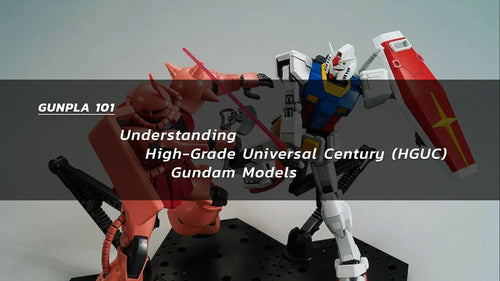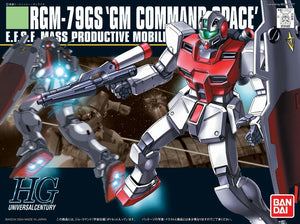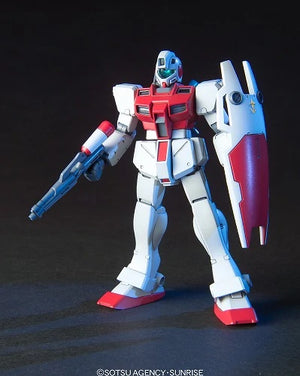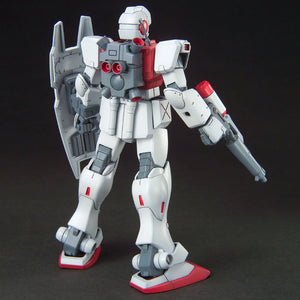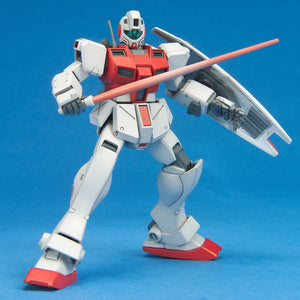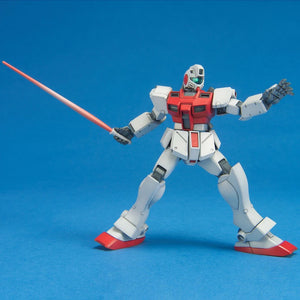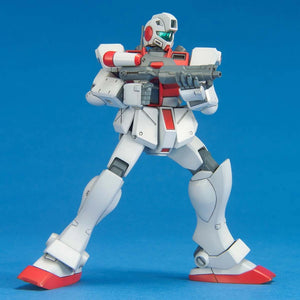
Description
The RGM-79GS GM Command Space Type is a mobile suit introduced in the OVA Mobile Suit Gundam 0080: War in the Pocket.
Following the success of the RGM-79D GM Cold Districts Type, a late production type GM deployed in the One Year War, development of new localized warfare machines using the suit as a basis started. The basic concept is to maintain the fundamental design of the GM Cold Districts Type while improving on its output and mobility. Demands of MS pilots who were unsatisfied with the original RGM-79 GM's performance were also taken into account, and with the upcoming counter offensive in space against the Principality of Zeon in mind, a decision was made to simultaneously developed a ground use unit and a space use unit. The end results were the space use GM Command Space Type, and the ground use RGM-79G GM Command. Both suits were also used to collect data for the development of next-generation mass production models.
Specifications wise, the GM Command series is said to be a match for the Zeon's MS-14A Gelgoog, but as many of the machines were deployed to areas outside of the main battlefield that had low urgency, its functions were often suppressed and it could not display its full potential. To improve on the GM Cold Districts Type’s mobility, the GM Command series’ thrusters are distributed all over its body. Furthermore, the backpack, which contains the main propulsion system, was also boldly redesigned and optimized separately for the GM Command Space Type and GM Command. This difference in the backpack is the biggest characteristic that differentiates the two machines, and is related to the different gravitational environment that they operate in, 0G and 1G respectively. While the GM Command had downward-pointing thrusters concentrated on the bottom of the backpack, the GM Command Space Type's thrusters are spread around the backpack and faces various directions. The GM Command Space Type's thruster output is also boosted by 10%, has more apogee motors, as well as a greater propellant capacity for higher operating time.
With the GM Command series use of a generator with higher output, intakes and ducts are also added to enhance cooling functions. This higher output generator is however a double-edged sword. Although it allows for full-scale operation of equipment like beam gun and beam rifle, such generators at that time could only be manufactured in zero gravity facilities, so mass production of the suit then at the Earth Federation Forces’ largest production facility at Jaburo was not possible. This had a negative impact on the suit's production number during the war.
Due to the accumulation of manufacturing and designing knowledge, the GM Command series' maintainability and operability was greatly improved compared to the very first mass production models that had inconsistent standards. Unlike the normal GM, the GM Command series has additional sensors in the head such as environment monitoring sensors to thoroughly detect human presence/survivability, and this boosts the suit's anti-personnel and anti-material evasive capabilities. The GM Command series is also the first in the GM series to utilize the mono-eye camera in the head to improve producibility. Communication capabilities are enhanced via the shoulder antenna, which also helps to prevent interferences or jamming caused by frequency bands used by civilians inside and outside of colonies. It was relatively easy to change the GM Command series' armor, backpack, and other parts; furthermore, its specifications can also be changed with little modification to the base structures.
As the GM Command series was deployed as replenishment units during the war, only a small number were produced. Assignment of the machine to experienced MS pilots was prioritized, and as these pilots were often appointed as commanders of newly formed MS platoon, the GM Command series also gained a reputation as a 'Commander Use Unit' even though it was not specifically built for commanders. There were also cases where the suit was supplied on a platoon scale, leading to a considerable number of operational units in total.
HG 1/144 HGUC RGM-79GS GM Command Space Type
Bandai
High Grade 1/144 GundamGunpla 101
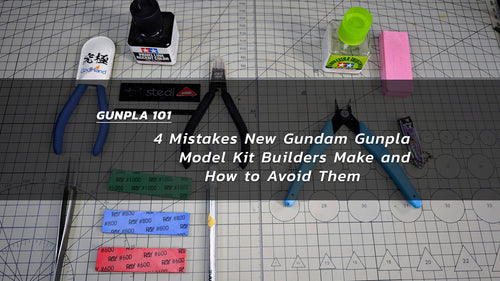
4 Mistakes New Gundam Gunpla Model Kit Builders Make and How to Avoid Them
Building Gunpla, or Gundam Plastic Model Kit, is a passion that’s captured the imagination of...
Beginner’s Guide to Nubs: What They Are and How to Deal With Them
If you're new to scale modeling or Gunpla, you’ve likely heard the term nubs thrown...
Top 10 Beginner-Friendly Gunpla Kits for the 2023 Holiday Season
The holidays are fast approaching, and with them comes the perfect opportunity to introduce someone...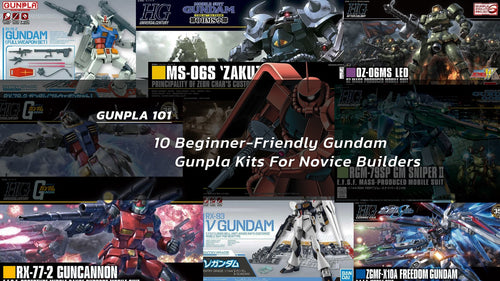
10 Beginner-Friendly Gundam Gunpla Kits for Novice Builders
Embarking on a journey into the world of Gundam Plastic Models, or Gunpla, can be...
What are Gunpla Decals and How to Apply them: A Beginner's Guide for a Realistic Finish
Learn how to properly apply water slide decals to your Gunpla models for a professional...